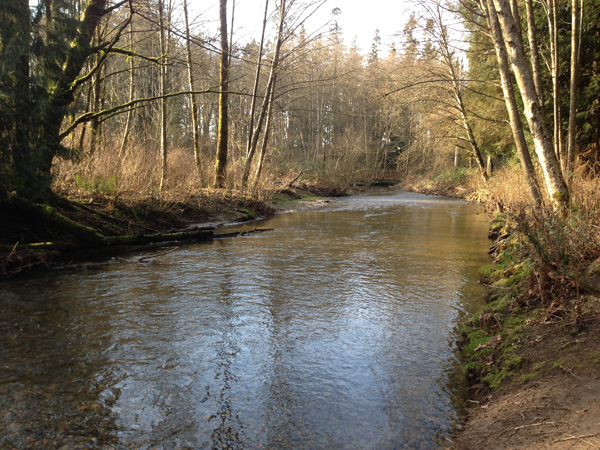If you are fortunate enough to live in the Salmon River watershed, there are many things to appreciate:
- Despite being small (only 40 km long) it is one of the most studied rivers and watersheds in B.C. Its importance is recognized by various levels of government and was the subject of a Watershed Management Plan in the 1990s. It is seen as the test case for development of ground water protection in the province.
- The Salmon River is the site of one of the last remaining healthy runs of wild coho and steelhead in Metro Vancouver/Lower Fraser Valley and one of the most productive rivers for its size in B.C. for wild coho.
- The survival rate in the ocean for wild coho is 2 to 3 times higher than hatchery raised salmon.
- Unlike many rivers, the Salmon River has not had runs supplemented by hatchery fish.
- Over 20 other species of fish live in the river, including Harrison River chinook. They gather in early spring in the lower reaches of the Salmon River in preparation for their migration to the sea.
- The river is home to the endangered Salish Sucker in both the upper reaches and lower reaches (floodplain).
- It is designated a “key river” by the federal Department of Fisheries and was the index river used to keep track of Georgia Basin coho trends for over 25 years.
- The Salmon River holds tremendous heritage value because it was the trade route in and out of the Lower Fraser Valley for hundreds of years. First Nations people canoed up the Salmon River, portaged through the Milner area, and then followed the Nicomekl River from the City of Langley to the ocean at Mud Bay.
- In the Lower Fraser Valley, the Salmon River floodplain is one of the rare examples of a natural meandering waterway, so it is an excellent canoeing and recreation area.
